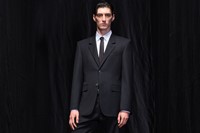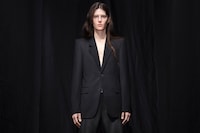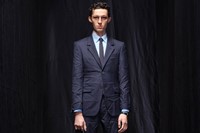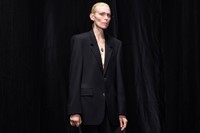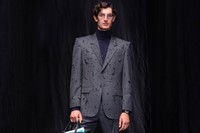The creative process of Demna – at Balenciaga, and before – has always been to buck against the notion of the normal, the accepted, the standard. But standard was the theme of his Autumn/Winter 2025 Balenciaga ready-to-wear show, models marching around inside a maze of identical – standardised – seating in pitch black. It was difficult to navigate, because everything looked the same.
That, of course, was a comment in and of itself – as Demna has always eschewed creating clothes that look like everybody else’s – although, of course, now many designers create clothes that look a lot like his. This Balenciaga show began with a bunch of corporate suits, yet each one, somehow, had been sullied, manipulated to become other. They were crushed and wrinkled, or pocked with moth holes, one shown with a long skirt to immediately shift from formal day to formal night, boardroom from waist up, opera house down below.
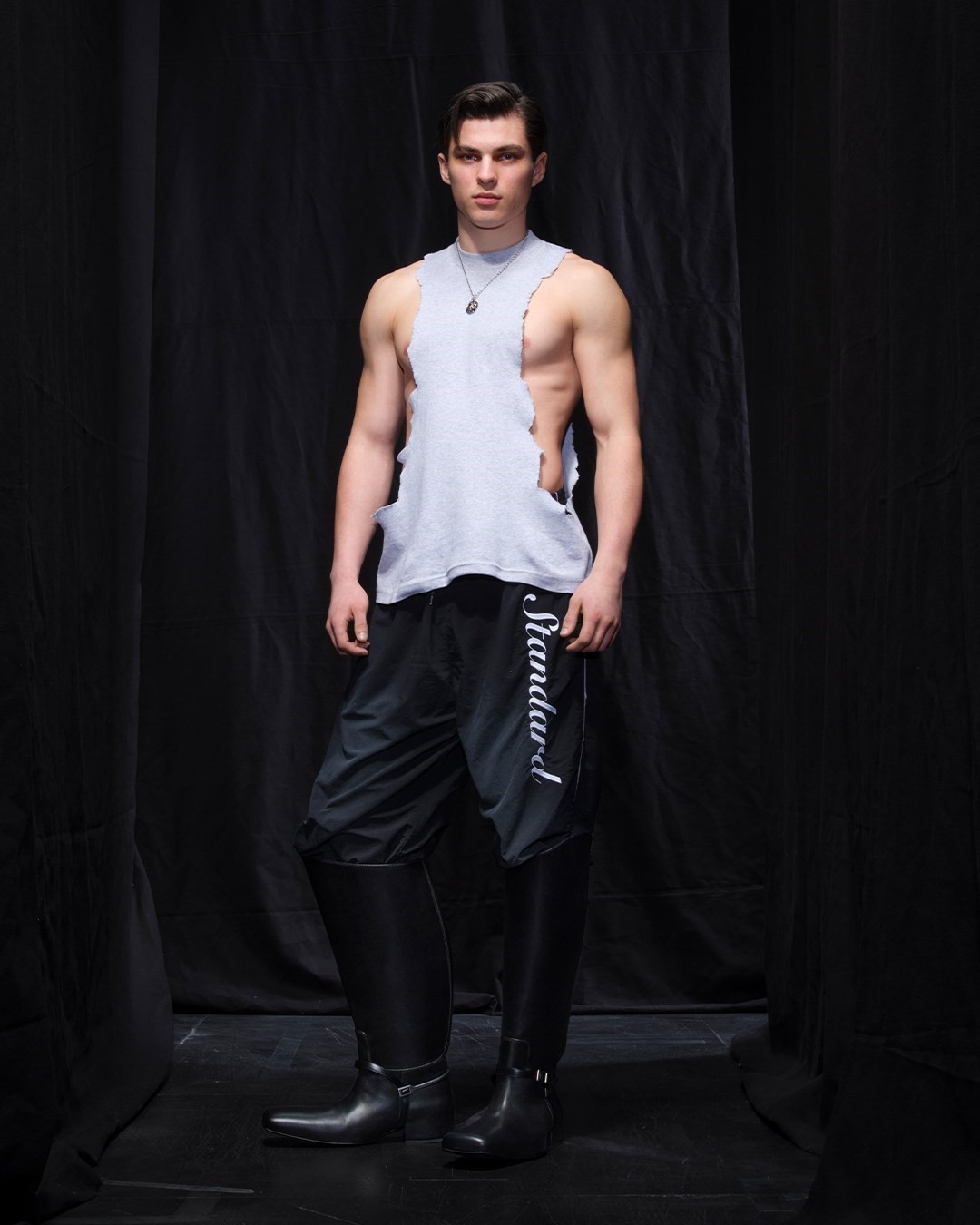
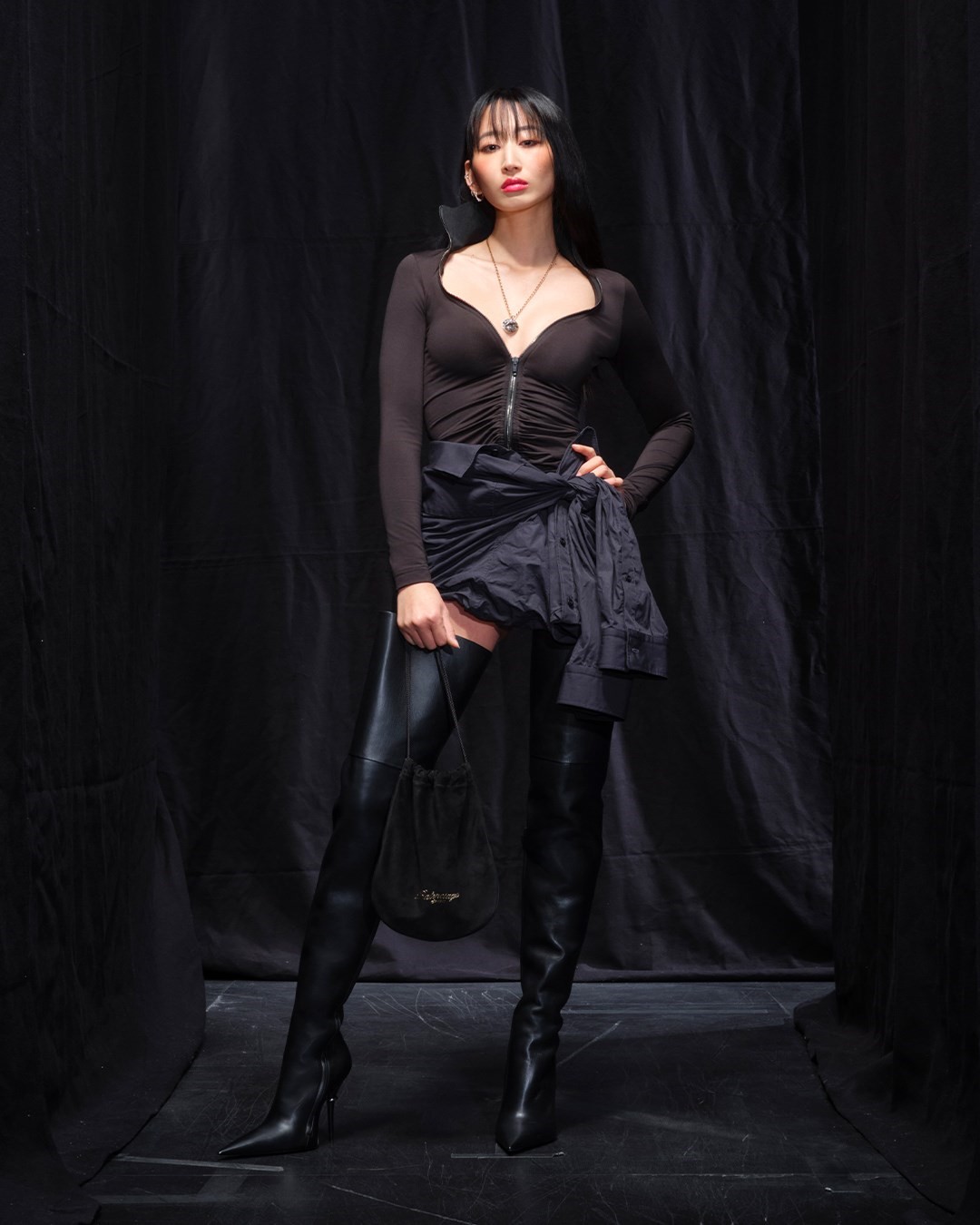
And then Demna cycled through the archetypes he has established for his twenty-first century Balenciaga – his ‘Standard-Issue’ Balenciaga-isms – fused with some gestures towards the ‘Standards’; of Balenciaga’s past. There were plenty – oddly, perhaps more than ever before, with references thrown out to the semi-fitted line of 1951, or to Cristóbal Balenciaga’s gazar wedding gown and cowl headpieces of 1967. That was translated into a floor-length hoodie in Madonna blue, while sweeping coats had a feel of Zurbarán – the Spanish artist passionately admired and referenced by Cristóbal – and a zippered décolleté recalled Balenciaga’s designs for the mid-century American society maven Bunny Mellon. In a weird bit of arcane fashion muse cross-over, the wallpaper in Mellon’s guest room at Hubert de Givenchy’s house inspired a dress in Sarah Burton’s debut for that house earlier this week. But, of course, Cristóbal would never have countenanced Spandex mini-dresses with integrated swimsuits, or tracksuits – although, as that aforementioned semi-fitted line attested, comfort was always a consideration for him. So maybe they’re not a million miles away.
In a sense, what this show – clever, as Balenciaga shows always are – had to say was about how un-standardised Demna’s vision of luxury is. Indeed, ‘Luxury’ was a slogan embalmed across a series of garments, perhaps in ironic comment on the continuing seating around the concept of ‘quiet luxury’, and its deadening impact on the industry at large. Demna’s ‘Luxury’ hoodie was lined in superfine cashmere, with hand-stitched sweatpants – Cristóbal, eat your heart out. He also proposed a new bag, a plastic shopper made from a textile named Dyneema, the world’s strongest fibre with a tensile strength 15 times that of steel. So, basically, a throwaway-looking bag that is, technically, indestructible.
That’s a challenge to a standardised view of luxury, much as pretty much everything Demna has done during almost a decade of reshaping Balenciaga. I remember him talking, once, about his perception of couture – allying a collection of collaborations with brands as wildly varied as Manolo Blahnik, Levi’s, Hanes and Juicy Couture with the harnessing of the skills of workshops like the embroider Lesage or the feather-worker Lemarié. They’re all specialists, just framed differently. This collection showcased a collaboration with Puma on technical sportswear, in an echo of that approach. It will obviously raise the hackles of purists – as Demna seems wont to do.
The only standard thing about Demna’s approach to luxury – to couture, to Balenciaga, to fashion in general, it seems – is its anarchic spirit.

